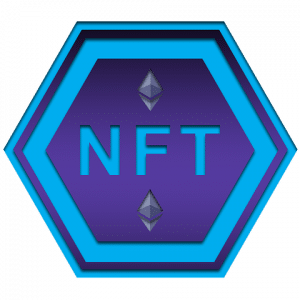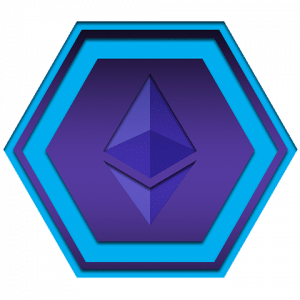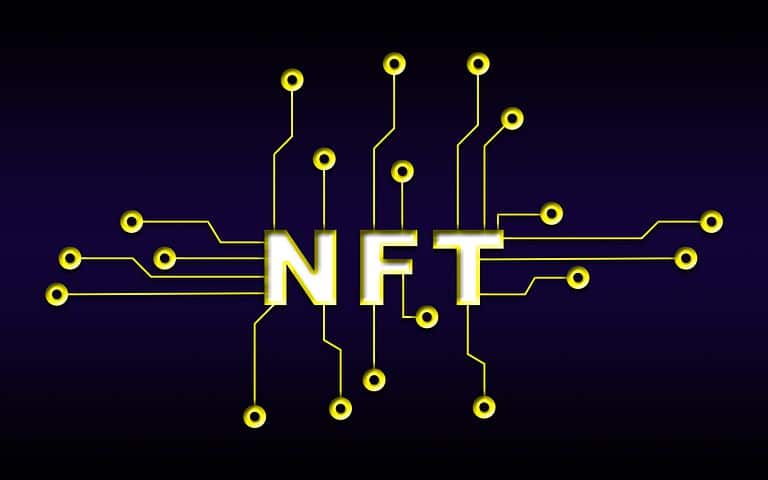NFTs are a new type of digital asset that is changing the way we think about ownership.
An NFT is a unique token that represents digital or non-digital assets and can be used as a means of exchange.
This article will give you a brief introduction to NFTs.
What is an NFT?
Non-fungible tokens (NFTs) are digital assets that certify ownership and authenticity of an item. Unlike bitcoin, which is a fungible asset (i.e., each bitcoin is equivalent to any other bitcoin), NFTs are built on top of blockchain technology and are unique and individual.
What makes them valuable is that they are one-of-a-kind and backed by a blockchain network. This means you can own something virtually and be certain that you are the only person who owns it
Each NFT contains metadata that verifies its authenticity, such as when it was created, who made it, etc., making it impossible to replicate
There are many types of NFTs — some might represent real-world physical assets like a house or a car, while others might represent stock certificates or art objects.
For example, Jack Dorsey recently auctioned off his first tweet as an NFT for $2.9 million.
NFTs are tokens that are created on the Ethereum blockchain. Ethereum is a platform that uses smart contracts to create, store and transfer digital assets.
The most common NFTs are ERC-721 tokens, which are non-fungible. This means that each token is unique and not interchangeable with any other token. In contrast, cryptocurrencies such as Bitcoin (BTC) and Ether (ETH) are fungible.
Each NFT is represented by a unique identifier on the Ethereum blockchain, which you can verify by checking its address in Etherscan or Enjin Blockchain Explorer. The token itself is stored in an Ethereum wallet and can be bought, sold or traded – just like any other cryptocurrency.

How does an NFT work?
NFTs leverage blockchain technology, which enables the creation of a trustless network that allows for the transfer of a token from one user to another without the need for an intermediary.
Because of their unique characteristics, NFTs have become popular in the digital art world, where their use has given creators new ways to make money. Artist Beeple, for example, sold a collage for $69 million using an NFT.
To create an NFT, users must first select a blockchain network on which they want to create their token. Ethereum is the most popular option by far, but there are other networks with similar functionality. Once they’ve selected their desired platform, users can develop their own code or use templates provided by platforms like OpenSea.
Once the NFT is created, it can be sent to exchanges where it can be bought and traded like any other cryptocurrency. But unlike other cryptos, NFTs are not divisible — they are always worth exactly 1 unit of the native cryptocurrency of whatever network they were created on.
The key difference between an NFT and a traditional, physical work of art is that it is digital. NFTs exist online and can be traded in the same way as cryptocurrencies such as Bitcoin or Ethereum.
The art Itself could be anything from a digital picture to a GIF (a short, animated image) or even a video.
The owner of the NFT pays a fee to have their art listed on an online marketplace, where they can sell it to the highest bidder. Artists themselves can set up shop on these marketplaces and sell their own work.
Some artists are selling their work directly, while others are using platforms such as the blockchain-based foundation SuperRare, which acts as a facilitator between buyers and sellers.
What makes an NFT unique?
NFT stands for a non-fungible token, and it’s a new way to collect and trade digital assets, like virtual trading cards or art. It’s a unique code, stored on a blockchain, that’s attached to the digital asset. It proves that you own the original of this digital asset. No one else can take it away from you. And you can resell or trade it whenever you want.

NFTs have something in common with cryptocurrencies: the blockchain.
Blockchain is an unbreakable digital ledger that records financial transactions and other forms of data. And because it’s decentralized, no one can change or delete the information it contains. This makes the blockchain a secure system for recording ownership of intangible assets like music, art, and even sports cards.
For example, when you buy a song on iTunes, you’re allowed to listen to it as often as you wish, but you don’t own it. You’re only licensing it from Apple until your subscription ends. This allows Apple to remove your access to the music if you don’t keep paying for your subscription. But if a musician sells an NFT, they cannot ever take back ownership of that song because the NFT resides on the blockchain.
As mentioned above, an NFT is a non-fungible token (NFT), which is a digital certificate that can be stored on the blockchain.
An NFT differs from Bitcoin (BTC) in that each unit of the cryptocurrency is identical. When the token holder transfers one BTC to another party, the transaction is complete. The same currency was given to the recipient, and the sender has nothing left.
In contrast, when an NFT changes hands, it does not change. It remains a unique token for its owner. This means that it cannot be transferred to another party, although it can be sold to others or broken down into several pieces and sold separately.
The uniqueness of the NFT makes it particularly interesting for collectors and artists who want their work to have a unique certificate of authenticity.
What can be an NFT?
Anything that is unique and original can be tokenized in the form of an NFT. The most popular NFTs are digital art and collectibles, but there are also nonfungible tokens for real estate, sports cards, concert tickets, domain names, and even tweets.
NFTs have been around for a few years now. In 2018, the first-ever tweet was tokenized on the Ethereum blockchain by Twitter creator Jack Dorsey, generating $2 million for charity. In 2019, NBA Top Shot became one of the first mainstream platforms to take advantage of NFTs to sell basketball highlights as digital collectibles — it has generated more than $200 million in sales so far.
The popularity of NFTs exploded in 2020 when an artist named Beeple sold a collage of digital images at auction for $69 million as stated above.
Since then, the NFT craze has grown exponentially. In February 2021 alone, more than $300 million worth of NFTs were sold — mostly digital artworks — according to NonFungible.com’s database.
A Non-Fungible Token (NFT) is a digital asset that can be bought, sold, or traded. An NFT can represent a wide variety of digital assets, including images, audio files, videos, and 3D models.
The most common use for NFTs is to represent collectibles. This ranges from digital trading cards to the artwork of Beeple. An NFT can also represent intellectual property rights, such as music. The artist Grimes sold an album as an NFT on Rarible in February 2021. Some artists are even selling their lives as NFTs!
There are many different ways to create an NFT on Ethereum. Common platforms include OpenSea, Rarible, and SuperRare.

How do you create an NFT?
To create an NFT, you must first do two things:
1. You must own a digital asset that you want to turn into an NFT. This can be anything from a piece of artwork to a .mp3 file. The asset must be unique and either owned by the creator or purchased with the right to resell it as an NFT. Often, when purchasing art, the artist will retain some of the rights to their work and keep them in order to capitalize on any future earning potential of that work.
2. You need to create a non-fungible token (NFT). This is done on the blockchain where your unique asset is linked to the NFT and made forever identifiable as yours. Etherium is probably the most commonly used blockchain for this at the moment, but Tron and Cardano are also popular choices among creators.
You can either build your own website or use one of many pre-built platforms that make creating an NFT easy for even those with no technical knowledge. Some of these include Mintable, Rarible, SuperRare, and OpenSea.
To do that, you must follow these three steps below:
1. Decide what your NFT is going to represent. It can be a digital image, a piece of music, or even a tweet.
2. Create the file that represents it and upload it to one of the platforms where NFTs are traded (or find a platform that will host it for you). These include OpenSea, Rarible, and SuperRare.
3. Once you’ve created your NFT, and it’s listed for sale on your chosen platforms, you can set the price for your NFT and wait for buyers to snap it up!
Set up your wallet so you can receive payment when your NFT sells. You can either set up an account on Ethereum or use a service like MetaMask.
NFT use cases
NFTs can be used to store a variety of information and data, making them useful for a range of different use cases. The primary benefit of NFTs is that they provide an immutable record of ownership and history. NFTs have some unique use cases. The following are some of the use cases for NFTs:
Collectibles: NFTs can be used to create digital collectibles, such as artwork, photos, music, and even tweets.
Real estate: The real estate industry is one of the first sectors to adopt NFTs. Some real estate companies are creating digital deeds for property that can be bought and sold on a blockchain.
Gaming: The most popular use case for NFTs is currently gaming. In games like CryptoKitties, Gods Unchained, NBA Top Shot, Sorare and NBA Top Shot, players can purchase or win items such as non-fungible cards or rare collectibles that can be used in-game (like a rare sword) or that may only exist as a digital collectible. These items typically cannot be replicated and are stored on the blockchain.
Digital art: NFTs can also be used to represent digital art. Artists can now sell their original artwork in digital format (e.g., a JPEG file) as an NFT on the blockchain. The NFT makes it impossible for someone to duplicate artwork while still enabling buyers to enjoy the visual aspect of their purchase. By selling artwork as an NFT rather than through traditional platforms like Etsy or eBay, artists can retain more of the revenue from their sales.
Tickets, event access, badges: Tickets are already moving toward digital form, but an NFT ticket could provide an extra layer of security against counterfeiting and scalping while also allowing secondary sales when the original buyer doesn’t want to attend after all.
Certificates: Many companies create digital certificates for their employees or contractors when they complete courses or training. These certificates can be digitized as NFTs and then verified by anyone who wants to check their validity. The same principles apply to titles like degrees or diplomas that are issued by educational institutions.
IDs: Blockchain is perfect for creating secure digital identities that can’t be forged. Your identity could one day be represented by an NFT that you carry around with you wherever you go.
Tokens: Create your own custom token and benefit from interoperability with other projects.

How to secure your NFTs
Many people are interested in using their own artwork as a form of NFT. This is limited, however, by the fact that you can’t control who sees your artwork once it’s been made into an NFT. Your work might be stolen, a customer might use it without permission or the seller might sell everything they own to buy your art.
That being said, there are ways to mitigate these risks. First and foremost is to protect your work with a Copyright Notice. For example: “© Mads Kristiansen 2022”.
Copyright Notices are difficult to enforce because they’re not governed by any formal law; you have to go after a person in civil court or through a copyright-infringement tribunal. Even if you win in court, there’s no guarantee that anyone will pay up.
Another way to protect your work from theft or unauthorized sale is through the use of watermarking. This technique involves embedding information about the artist or company in the image file itself. A good option for artists is OpenGameArt where you can upload high-quality pictures and keep track of who has downloaded them and when.
How do I buy an NFT?
There are a number of ways to buy NFTs. Some art platforms, like the popular OpenSea, have their own marketplaces where you can search for NFTs and complete trades. Others require that you use cryptocurrency to buy your NFT.
You need to create a cryptocurrency wallet. A cryptocurrency wallet is a place where you can buy, sell, and hold your digital assets. There are many Wallet providers out there each with its own benefits and drawbacks.
The most popular and secure one is Metamask.
Once you have created your wallet, the next step will be to get some cryptocurrency to spend on NFTs. You can buy it from an exchange such as Coinbase, Binance, or Kraken where you can also store it in your Metamask wallet.
To purchase an NFT, navigate to the platform where you want to buy an NFT from such as OpenSea, and choose the NFT you want to purchase. Once you have selected the NFT, click on Buy and then connect your Metamask wallet.
If you are buying an NFT that is priced in ETH, then check that your Metamask account has enough ETH balance to cover the cost of the transaction fee (gas) as well as the cost of purchasing the NFT. The transaction fee varies depending on how congested the Ethereum network is.
How do you know if an NFT is authentic?
There are a few ways to verify an NFT’s authenticity.
The first is by checking your wallet. If you’ve purchased a piece of art or music file on an NFT marketplace, the token will appear in your digital wallet.
In addition to showing your balance, wallets should display the transaction history, including any purchases you’ve made.
Another way is to use a block explorer, like Etherscan.io or EnjinX, which both allow you to track cryptocurrency transactions across the blockchain — the decentralized ledger that permanently records all NFT transactions.
For example, if you’re interested in buying an NFT from an online marketplace like Rarible or OpenSea, start with the art’s landing page and look for the token ID number (sometimes referred to as a hash). Copy that number into Etherscan or EnjinX and it will show whether it’s tied to anything of value.
Why are people buying NFTs?
An NFT is a piece of digital art that is uniquely identifiable. NFTs are traded on marketplaces in the same way that other collectibles like coins, baseball cards, and stamps are. However, unlike most collectibles, NFTs are non-fungible, which means that each one is unique and impossible to exchange for an identical item.
NFTs are often associated with art because they have been used to sell digital artwork, but they can represent an item that’s valuable to someone. For example, you could buy an NFT of your favorite meme or a very special tweet.
The purpose of an NFT Is to give digital items a unique identity so they can be bought and sold as easily as regular items. They do this using blockchain technology, which is a secure way of storing data in lots of different places so it’s impossible to fake or loses. The information stored in an NFT includes who owns it and what it represents.
Conclusion
The takeaway here Is that you don’t need to be a famous artist or musician to create an NFT. If you have the skills to create a digital work of art, such as a drawing, a photograph, a painting, a video clip, or even an audio recording, you can create an NFT out of it.
As a result, people with all sorts of artistic and creative skills can earn money by creating and selling NFTs. This might include photographers, painters, illustrators, videographers, and musicians. It might even include people who play games like Minecraft or Roblox — if they build something cool in their game that other players want to buy!
The only requirement Is that your work is original and creative enough to be considered art. If so, it can become an NFT!
